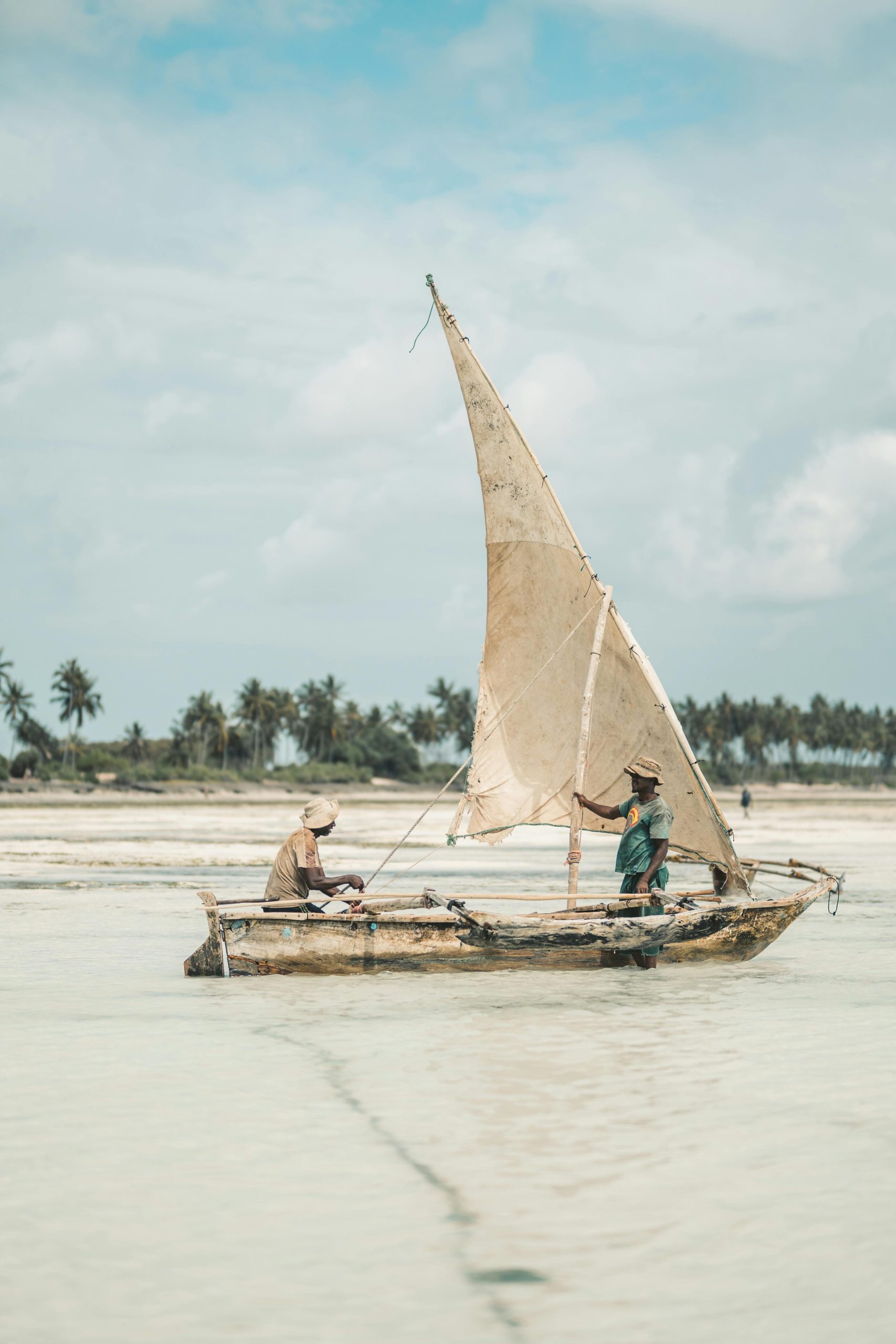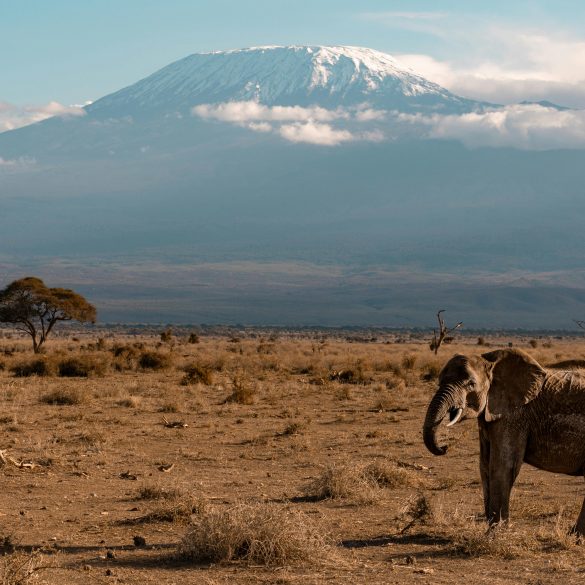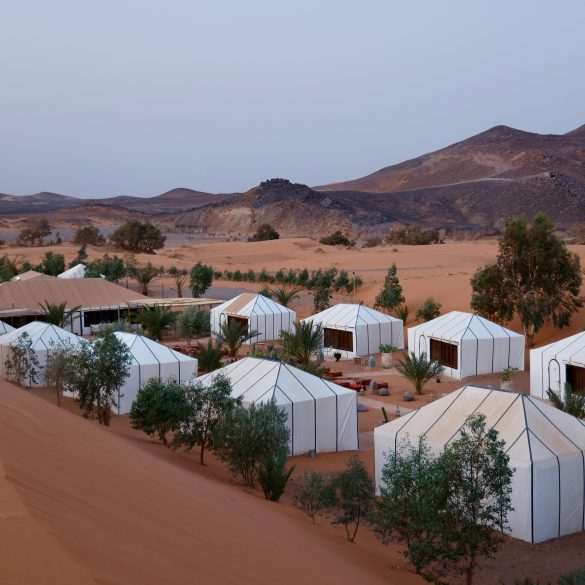How Zanzibar Blends African, Arab, and Indian Cultures: A Living Testament to Cultural Fusion
Standing in Stone Town’s winding alleys at sunset, you can literally smell the cultural fusion happening around you. The air carries frankincense from Omani traders, cardamom from Indian spice merchants, and the smoky aroma of nyama choma from local Swahili kitchens. This isn’t just tourism marketing—it’s the daily reality of life in Zanzibar, where three major cultural streams have been flowing together for over a thousand years.
What strikes me most about Zanzibar isn’t just that these cultures coexist—it’s how they’ve genuinely blended into something entirely new. After spending considerable time researching East African cultural dynamics, I’ve come to realize that Zanzibar represents one of the world’s most successful examples of organic cultural synthesis. We’re not talking about separate communities living side by side, but rather a true melting pot where Arab architectural styles house Indian-influenced businesses run by Swahili-speaking families.
The Historical Foundation of Cultural Convergence
Here’s what I find fascinating about Zanzibar’s story—it wasn’t planned cultural integration. According to archaeological evidence from the University of York, Indian Ocean trade routes brought merchants from Gujarat and Rajasthan to these shores as early as the 8th century. These weren’t conquering armies or colonial administrators, but business people looking for opportunities. They married locally, adapted to Swahili customs, and gradually became part of the social fabric.
The Arab influence came in waves, but the most significant was the Omani period starting in the 17th century. What’s interesting is that even the Omani sultans who ruled Zanzibar didn’t try to completely impose their culture. Instead, they adapted to local conditions while bringing their own architectural styles, legal systems, and religious practices. I’ve always found it remarkable how pragmatic this approach was—you can’t effectively govern a multicultural society by ignoring the existing cultural framework.
Zanzibar Cultural Fact: The island’s population today reflects this historical blending: approximately 95% are of mixed African-Arab ancestry, with significant Indian and Persian influences. The term “Shirazi” refers to descendants of Persian settlers, while “Swahili” encompasses the broader African-Arab cultural mix. This demographic complexity makes Zanzibar unique even within Tanzania.
The Indian influence is probably the most underestimated aspect of Zanzibar’s cultural identity. During the 19th century, Indian merchants controlled roughly 80% of the island’s trade according to British colonial records. But more importantly, they introduced architectural elements, business practices, and culinary traditions that became permanently woven into Zanzibari culture. When you see those beautiful carved wooden balconies in Stone Town, you’re looking at Indian craftsmanship adapted to tropical conditions using local materials.
Architectural Fusion: Where Three Worlds Meet in Stone
Walking through Stone Town is like reading a visual history book of cultural fusion. I’ll be honest—the first time I studied these buildings, I was completely overwhelmed by the complexity. You’ve got Omani-style fortifications sitting next to Indian-influenced merchant houses, with Swahili decorative elements binding everything together. It’s architectural jazz, if you will.
The most striking example has to be the House of Wonders, or Beit-el-Ajaib. Built in 1883, it perfectly demonstrates this cultural synthesis. The basic structure follows Omani palatial design, but the decorative ironwork came from Indian craftsmen, and the building techniques incorporated local Swahili methods for dealing with coastal humidity. According to the Zanzibar Commission for Cultural Properties, over 1,700 buildings in Stone Town show this kind of multicultural architectural DNA.
“Stone Town represents a unique architectural phenomenon where Arab, Persian, Indian, and European elements have been harmoniously combined with indigenous Swahili traditions.” – UNESCO World Heritage Committee assessment, 2000
The Devil’s in the Details: Architectural Elements
What really gets me excited about Zanzibar’s architecture is how specific cultural elements were adapted and reimagined. Take the famous Zanzibar doors, for instance. The basic concept comes from Indian Gujarat tradition, but local craftsmen added Islamic geometric patterns and Swahili symbolic elements. Each door tells a story of cultural negotiation and artistic synthesis.
- Arab influence: Flat roofs, courtyard layouts, and mashrabiya (latticed windows) for privacy
- Indian elements: Carved wooden balconies, ornate doorways with brass studs, and verandas
- Swahili adaptations: Coral stone construction, wider windows for ventilation, raised foundations
- Persian touches: Decorative arches, intricate tile work, and garden courtyards
Culinary Fusion: Where Spices Tell Stories
Now, this is where things get really interesting for me personally. I’ve spent countless hours in Zanzibar’s spice markets, and let me tell you—the culinary fusion here isn’t just about mixing ingredients. It’s about completely reimagining what food can be when cultures truly blend rather than just coexist.
The signature dish, pilau, perfectly exemplifies this cultural synthesis. The rice cooking technique comes from Persian tradition, the spice combinations are distinctly Indian, the meat preparation follows Arab methods, and the coconut milk base is purely Swahili. According to food anthropologist Dr. Kjersti Larsen from the University of Bergen, Zanzibar’s cuisine represents one of the world’s most successful examples of culinary creolization.
Essential Zanzibari Fusion Dishes
These dishes showcase the island’s multicultural culinary heritage and are must-tries for any visitor interested in experiencing authentic cultural fusion through food.
| Dish | Cultural Origins | Key Ingredients | Cultural Significance |
|---|---|---|---|
| Biryani za Nazzi | Indian-Arab-Swahili | Coconut rice, cardamom, cinnamon | Wedding celebration staple |
| Urojo (Zanzibar Mix) | Indian-Swahili street food | Lentils, tamarind, bhajia, mango | Daily social gathering food |
| Kachori | Indian-adapted locally | Coconut, cardamom, local spices | Hindu festival adaptation |
| Samaki wa kupaka | Swahili-Indian curry | Fish, coconut curry, Indian spices | Coastal fishing tradition |

Religious Diversity and Harmonious Coexistence
What absolutely fascinates me about Zanzibar is how religious diversity isn’t just tolerated—it’s celebrated as part of the island’s cultural identity. I’ve witnessed Diwali celebrations where Muslim neighbors actively participate, and Eid festivals where Hindu families contribute food and decorations. This isn’t superficial multiculturalism; it’s genuine religious synthesis born from centuries of shared community life.
The statistics are pretty remarkable when you think about it. According to the 2012 Tanzania Census, Zanzibar’s population is approximately 99% Muslim, but within that Muslim majority, you’ll find Sunni, Shia, Ismaili, and Bohra communities, plus smaller Hindu, Christian, and Bahai populations. What’s extraordinary is how these different religious traditions have influenced each other’s practices and celebrations.
“In Zanzibar, we don’t see religion as dividing us. When my Hindu neighbor celebrates Diwali, I bring sweets. When we celebrate Eid, they bring flowers for decoration. This is how we’ve always lived.” – Fatima Al-Barwani, Stone Town resident and cultural historian
Interfaith Architecture and Shared Spaces
The most visible symbol of this religious harmony is how different religious architectures coexist within Stone Town. You’ll find the Malindi Mosque (built in the 15th century) sharing a neighborhood with the Hindu Shiva Temple and the Anglican Cathedral. But what’s really interesting is how these buildings have influenced each other architecturally over time.
- Mosque architecture incorporates Indian decorative elements and Persian geometric patterns
- Hindu temples adapt Islamic architectural principles for local climate conditions
- Christian churches blend Arab and Indian architectural styles with European ecclesiastical design
Language Evolution and Swahili Cultural Identity
Here’s where things get really fascinating from a linguistic perspective. Swahili, or Kiswahili as it’s properly called, is often described as a Bantu language with Arabic influences. But in Zanzibar, you’re experiencing Swahili at its most cosmopolitan. The local dialect, Kiunguja, contains layers of Arabic, Persian, Hindi, Gujarati, and even Portuguese vocabulary that reflect the island’s multicultural heritage.
What I find remarkable is how language serves as a unifying force rather than a dividing one. Research from the Institute of Kiswahili Research at the University of Dar es Salaam shows that Zanzibar Swahili contains over 35% non-Bantu vocabulary, making it one of the world’s most successful examples of linguistic creolization. Everyone speaks Swahili, regardless of their ethnic or religious background, and it’s this shared language that enables the cultural fusion we see today.
Linguistic Fusion in Daily Life
Understanding how different languages blend in everyday Zanzibar conversation reveals the depth of cultural integration. These aren’t just borrowed words—they represent concepts and cultural practices that have become fundamentally Zanzibari.
Cultural Expressions Through Music and Arts
The musical landscape of Zanzibar tells the story of cultural fusion better than any history book ever could. Taarab, the island’s signature musical genre, literally means “to be moved by music” in Arabic, but the musical form itself represents a perfect synthesis of Arabic maqam scales, Indian ragas, and African rhythmic patterns.
I’ve had the privilege of attending several taarab performances, and what strikes me every time is how the audience represents this cultural diversity. You’ll see elderly Omani gentlemen sitting next to young Swahili women, Indian merchants next to African fishermen, all swaying to music that belongs to all of them and none of them exclusively. According to ethnomusicologist Dr. Janet Topp Fargion from the British Library, taarab represents “the sound of cultural hybridity made audible.”
The instruments themselves tell this story of fusion. The oud comes from Arab tradition, the tabla from Indian classical music, the violin from European influence via Indian musicians, and the ngoma drums from indigenous African traditions. But when they play together, they create something that’s uniquely Zanzibari—not Arab, not Indian, not African, but all of these at once.
Modern Cultural Identity in a Globalized World
What really gets me thinking about Zanzibar today is how this historical cultural fusion is adapting to modern globalization. The island faces the same challenges as other traditional societies—tourism pressure, economic modernization, and generational changes in cultural practices. But what I find encouraging is how Zanzibaris are approaching these challenges through their established tradition of cultural adaptation rather than resistance.
Young Zanzibaris I’ve spoken with don’t see their multicultural heritage as something that needs to be preserved in a museum. Instead, they’re actively reinterpreting it for contemporary life. According to a 2023 study by the University of Dodoma, 78% of young Zanzibaris consider their multicultural identity an advantage in the modern world, not a burden or complication.
Contemporary Cultural Challenges and Adaptations
Modern Zanzibar demonstrates how traditional cultural fusion can serve as a foundation for addressing contemporary challenges while maintaining authentic identity and community cohesion.
Tourism and Cultural Authenticity
The tourism industry presents both opportunities and challenges for Zanzibar’s cultural identity. On one hand, it provides economic incentives to preserve traditional arts, crafts, and cultural practices. On the other hand, there’s always the risk of turning living culture into staged performance for tourist consumption.
What I’ve observed during my visits is how Zanzibaris are navigating this tension through their established approach to cultural adaptation. Rather than presenting “pure” versions of Arab, Indian, or African culture for tourists, they’re showcasing their genuine fusion culture. The spice tours, for instance, don’t just focus on exotic spices—they explain how different communities use these spices differently and how cooking techniques have evolved through cultural exchange.
- Cultural tourism emphasizes authentic fusion rather than exotic otherness
- Local artisans adapt traditional crafts for contemporary markets while maintaining cultural significance
- Food tourism highlights genuine multicultural cuisine rather than simplified “ethnic” dishes
- Music and arts festivals celebrate living cultural traditions rather than museum-piece preservation
Economic Development and Cultural Continuity
The economic modernization of Zanzibar is happening through the lens of multicultural business traditions rather than in opposition to them. Indian-origin families still dominate certain sectors like import/export and retail, Arab-origin families maintain strong positions in real estate and tourism, and Swahili entrepreneurs are expanding into new sectors like technology and creative industries.
What’s particularly interesting is how business partnerships often reflect the island’s multicultural character. A typical successful Zanzibar business might involve Arab capital, Indian commercial networks, and Swahili local knowledge. This isn’t ethnic tokenism—it’s practical utilization of different communities’ historical strengths and connections.
Lessons for Our Globalized World
Looking at Zanzibar’s success in blending cultures, I can’t help but think about what lessons this offers for other multicultural societies. The key insight, I believe, is that successful cultural fusion requires time, mutual respect, and economic interdependence. You can’t legislate cultural integration, but you can create conditions where it happens naturally.
The Zanzibar model suggests that cultural fusion works best when it’s driven by practical necessity rather than ideological mandate. Merchants needed to communicate across cultural boundaries to conduct business. Families needed to adapt to local conditions while maintaining their cultural practices. Communities needed to cooperate for mutual prosperity and security.
“Zanzibar shows us that cultural diversity is not about maintaining separate ethnic enclaves, but about creating new forms of identity that honor multiple traditions while serving contemporary needs.” – Dr. Abdulrazak Gurnah, Nobel Prize in Literature, 2021
Zanzibar’s story continues to unfold, and what I find most hopeful is how this island society keeps demonstrating that cultural differences can be sources of strength rather than division. In our current global moment, when cultural tensions seem to dominate headlines, Zanzibar offers a different narrative—one where diversity creates richness, where adaptation strengthens identity, and where the future is built on the wisdom of multiple traditions working together.
The next time you find yourself in a multicultural environment, remember Zanzibar’s example. Cultural fusion isn’t about losing your identity—it’s about expanding it, enriching it, and creating something new that honors the past while embracing the future. That’s the true magic of this remarkable island, and perhaps the secret to building more harmonious societies everywhere.


